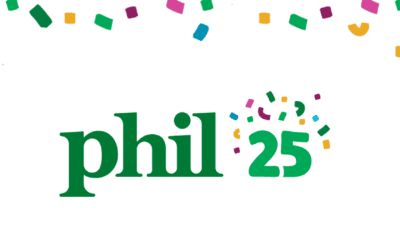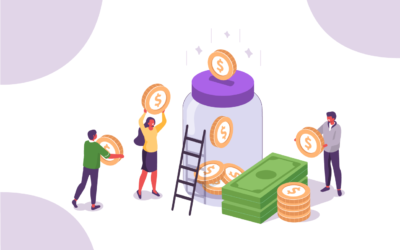Your nonprofit’s Customer Relationship Management (CRM) software is the heart of the technology your organization uses on a daily basis. A comprehensive, unified system keeps all of your donor and campaign data organized and enables your team to manage day-to-day tasks more efficiently.
As your nonprofit grows, you may find your current system limiting. For instance, maybe the system has a restrictive cap to the number of donor records you can create, a lack of features, or inflexible tools that hinder your team’s internal processes. These are all indicators that your nonprofit organization should consider investing in a more robust, scalable CRM.
Top CRMs can streamline your nonprofit’s processes and improve your fundraising potential. This guide will explore key points about customizable CRMs before providing an overview of two top CRM providers. Let’s dig in!
Features and Benefits
CRMs equip nonprofits with tools they need to manage donor relationships, host fundraisers, oversee their volunteer programs, and much more. Oftentimes, CRMs for smaller organizations have limitations that nonprofits may eventually outgrow.
CRMs designed for growing nonprofits have multiple benefits, including:
- Customization. Invest in a CRM that allows you to customize everything. This includes what information you track, how you store data, what your reports look like, how team members communicate internally, and every other part of your nonprofit’s day-to-day operations.
- Scalability. Some CRMs have limits on how many donor profiles you can have, funds you can raise, or members of your team who can log in to your system. Scalable CRMs allow you to increase donor data storage options, implement add-ons, and use a wide variety of integrations.
- Developer communities. CRMs created by top providers often have large communities of developers and consultants. These communities create new add-ons, provide assistance for setting up your system, and even design entirely new features for your specific nonprofit.
When deciding if your nonprofit should invest in a new CRM, start by assessing your goals. Then, determine how your CRM can help you achieve those goals. For example, if your goal is to increase donor engagement for fundraising, then consider scaling up your CRM so you can cultivate relationships with a larger number of donors, setting the stage for greater impact.
Consultant and Developer Services
CRMs for small organizations often have a variety of ready-made tools and can be set up quickly with some help from the software provider. In contrast, CRMs for medium and large organizations allow nonprofits to customize their system to have the exact functions they need.
Because this switch to holistic customization can be daunting, nonprofits will need assistance from a consultant to cover:
- Implementation. Implementing a new CRM can take multiple months. Work with your consultant to determine what features you would like your CRM to have and plan a timeline for integration. Factor in buffer time for your initial meetings to discuss features, development time, and delivering feedback to your development team.
- Training. Your consultant can train your team on how to use your new CRM’s features. Determine who on your team will attend these training sessions and be sure to take thorough documentation that can then be used to help teach the rest of your staff.
- Ongoing support. Your relationship with your consultant should continue long after your CRM’s initial setup. Your developer can provide continual support for technical issues or reconfigure your system if you would like to add a new app. Consultants can also help with data hygiene, identifying opportunities to better leverage your CRM, and provide advice about investing in add-ons. Additionally, consultants can also deliver ongoing training sessions, which can be useful for growing nonprofits that aim to bring on new staff members quickly.
Consultants and developers often specialize in particular CRMs. For example, there are numerous Salesforce consultants that focus on different aspects of Salesforce products. Consultants may focus on technical features and app development, while others can provide training and insight into using Salesforce to achieve your goals, and there are also consultants who offer developer services.
Implementation Process
A new CRM requires a significant amount of attention, often taking multiple months to fully administer. While your implementation process will vary based on your nonprofit’s needs and resources, be sure to consider your:
- Budget. Along with the initial costs of your new CRM, you will also need to factor in expenses such as consulting fees, training services, add-on purchases, and ongoing support costs.
- Management strategy. From the start, determine what key processes your team will handle, who will be accountable for them, and when they will need to check in with the rest of your team to report their progress. While your developer will be able to do much of the work building out new CRM features, decide which team member will be responsible for communicating with your developers.
- Transition plan. Work with your team to develop a management process that will sustain smooth interactions with donors while your new CRM is being developed. Look ahead and identify any challenges that may occur during this time, such as major events like Giving Tuesday or your annual gala, and plan for them in advance.
- Timeline. When switching to a comprehensive CRM, the sales process alone can often span several months. Prior to partnering with a consultant, dedicate time to researching top CRMs, having initial sales conversations, and planning your implementation timeline. For many nonprofits the entire implementation will take multiple months even after the initial sale.
Develop a realistic timeline for your implementation, but be prepared for it to change. For instance, during your data migration process, you may discover you have significantly more content that you would like to move to your new CRM and need to devote more time to content review. Doing so may slow down your overall timeline but set your new CRM up for even more success in the future.
Implementation Process
There are many CRM providers to choose from, and nonprofits should start their search by seeking referrals from organizations in their field and consulting trusted online resources. For nonprofits interested in scaling up, two of the top providers to consider are Salesforce and Blackbaud.
Here is a brief overview of their offerings for growing organizations:
Salesforce
Salesforce has multiple products for nonprofit organizations, the most notable being the Salesforce Nonprofit Success Pack (NPSP). Salesforce NPSP configures the base Salesforce CRM to accommodate nonprofit organizations’ primary needs:
- Campaign management. Track progress towards your goals and organize campaigns with Salesforce NPSP’s campaign management tools. This feature allows nonprofits to set an overall campaign, such as fundraising for their annual fund, as well as sub-campaigns, like individual events. This enables organizations to identify how each campaign component contributes to their overarching goals.
- Donor management. Salesforce NPSP’s donor management tools provide nonprofits with an in-depth look at their donors. Their profiles track personalized contact information, demographic data, engagement history, business affiliations, and other metrics.
- Reporting and analytics. Salesforce NPSP provides nonprofits with pre-configured reports, allowing nonprofits to quickly compile the information they need. Nonprofits can also create custom reports and information dashboards to display the exact data they need.
Nonprofits can further expand their Salesforce NPSP system with various add-ons that can be accessed through the Salesforce AppExchange. Many apps are available for purchase, but there are a few notable free apps created specifically for nonprofits, such as Volunteers for Salesforce, which allows nonprofits to manage their volunteer program through their Salesforce CRM.
Blackbaud
Blackbaud offers a range of products for nonprofits of various sizes. Organizations scaling up should consider Blackbaud’s Raiser’s Edge NXT or the Blackbaud CRM.
Here is a comparison of these two platforms:
- Raiser’s Edge NXT. Raiser’s Edge NXT is Blackbaud’s middle-of-the-road solution for medium organizations scaling up from small CRMs, but may not be ready for a fully customizable platform. Nonprofits implementing Raiser’s Edge NXT should partner with a consultant to complete the initial data migration and get team-wide training on how to use the fundraising and donor management tools that require customization.
- Blackbaud CRM. The Blackbaud CRM is primarily for large and enterprise-sized nonprofits interested in a fully customizable solution. Nonprofits that partner with a developer will be able to build out the system to meet their exact needs. However, the need for customization will result in a longer implementation timeline than Raiser’s Edge NXT.
Nonprofits interested in either solution should also explore Blackbaud’s apps and integrations. For instance, Blackbaud Luminate Online Marketing is a marketing platform that can transform the CRM by adding fundraising, marketing, and communications tools to both Blackbaud CRM and Raiser’s Edge NXT.
Scaling up is exciting, and your technology should support you. Explore CRMs that give your organization the resources it needs to grow. Assess your goals, upcoming projects, and resources to start researching CRMs and planning your implementation process. We are always here for you if you’re looking for guidance!



